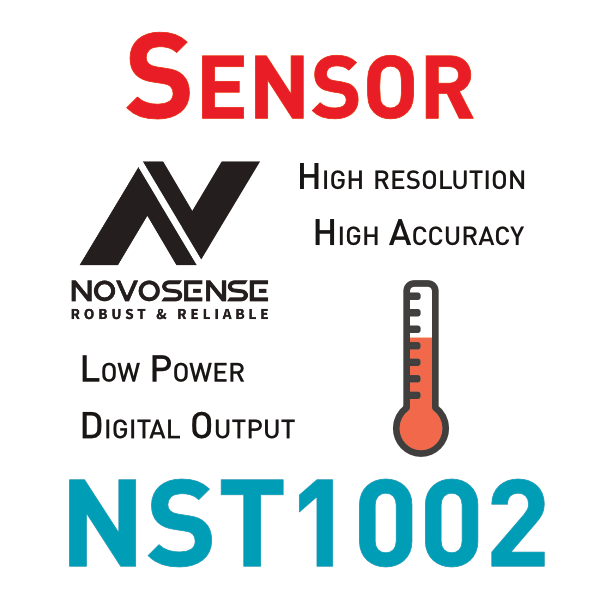
When selecting a temperature sensor for an application, it may be tempting to opt for an economical option that meets the basic requirements of the electronic product under development. However, it is worth considering that investing in a high-quality sensor could be a game-changer for the final product’s quality.
While some standard digital sensors offer acceptable accuracy for the device’s functionality, their accuracy may be limited to specific temperature ranges and consume more power compared to other options available in the market. Consequently, the lifespan and quality of the product could be significantly affected.
There are many types of temperature sensors and selecting the appropriate one primarily depends on the application. On the one hand, Thermistors are widely used in medical and industrial applications, among others; however, they might have some drawbacks that need to be considered when using them. First, they are susceptible to self-heating errors, which can lead to inaccurate temperature measurements if not properly accounted for. Second, their resistance change with temperature might be significantly non-linear, which can make it difficult to accurately interpret temperature measurements across a wide temperature range. Finally, NTC thermistors require shielding of power lines to prevent interference and noise that can affect the accuracy of temperature measurements.
Like NTC Thermistors, digital temperature sensors are also attractive for diverse applications in industry and medicine. These sensors offer several advantages, including accuracy, stability, and ease of use, as standard communication protocols can be utilized. Unlike NTC Thermistors, some digital temperature sensors offer better accuracy and higher resolution, such as the NST1002 by Novosense. Its high accuracy can be maintained across a temperature range of -50°C to 150°C, and its 15-bit ADC provides resolutions as precise as 0.0078125°C. Another remarkable advantage of this temperature sensor, among others, is its one-wire interface, allowing for direct connection to the MCU’s GPIO, which simplifies hardware design.
 The answer is yes! The NST1002 can serve as a two-wire digital temperature probe or a direct substitute for NTC thermistors (pincompatible 2-Pin packages), making it suitable for various applications, including automotive, industrial, and home appliances.
The answer is yes! The NST1002 can serve as a two-wire digital temperature probe or a direct substitute for NTC thermistors (pincompatible 2-Pin packages), making it suitable for various applications, including automotive, industrial, and home appliances.
It is also an ideal solution for low-power applications, such as wireless IoT sensor nodes, due to its low operating current. The NST1002 is available in DFN-2L and TO-92S-2L packages, featuring a pinout with DQ and GND, where DQ functions as both the power supply and digital IO.


The NST1002 is suitable for sensing real-time fluctuations in ambient temperature or body surface temperature. It can adapt its algorithm to improve the precision of glucose monitoring based on these changes. In this situation, you can position the NST1002 near the skin’s surface to obtain highly accurate body surface temperature readings, which results in more efficient data collection (more here).
DFN-2L:
0°C~85°C: ±0.1°C (typical) ±0.25°C(max.)
-40°C ~125°C: ±0.5°C (max.)
-40°C ~150°C: ±0.5°C (max.)@3.3V
TO-92S-2L:
0°C~85°C: ±0.2°C (typical)
-20°C ~85°C: ±0.35°C (max.)
-40°C ~125°C: ±0.7°C (max.)
-40°C ~125°C: ±0.7°C (max.) @3.3V
Have you found the perfect solution for your application and would like to get more information? Or are you unsure about what to choose and would prefer to receive some advice from us? If so, please fill out the following form, and we will contact you. We are more than happy to help you!